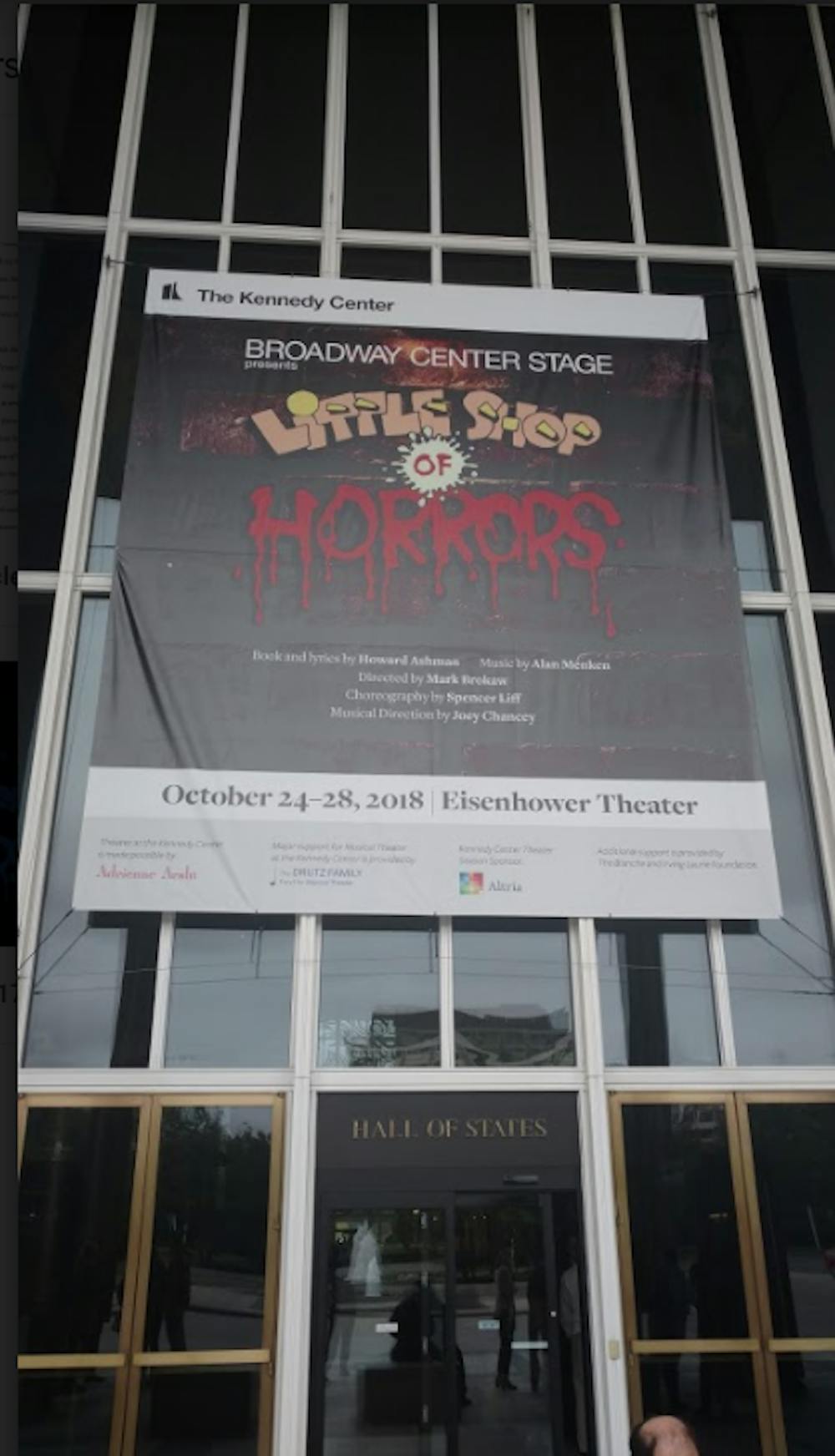In order to understand Little Shop of Horrors, you really only have to look at its main villain: a sentient, bloodthirsty plant named Audrey II. Despite its desire to eat as much human flesh as it can possibly get its hands on, Audrey II is also the show’s campiest character, just as likely to petulantly throw a tantrum as it is swallow a person whole. It never stops cracking jokes, even as it threatens to consume the entire human race.
That darkly comedic tone pervades the rest of Little Shop of Horrors and is an essential part of what makes the show so entertaining. From the moment that the curtain rises on Skid Row and the Greek chorus starts to sing a peppy song about all of the terrible things that are about to happen, the show is never afraid to revel in darkness. The world might be crumbling around us, the show seems to say, but that doesn’t mean that we should grimly resign ourselves to our fate.
Unsurprisingly, the recent production of Little Shop of Horrors at the Kennedy Center perfectly preserved this attitude. Despite the production’s relatively small scope — it and the rest of the Broadway Center Stage series are described as “semi-staged” — its incredibly talented cast imbued the show with equal parts hope and despair, resulting in a performance that was entrancing and devilishly enjoyable.
Little Shop of Horrors centers around Seymour Krelborn (Josh Radnor), a down-on-his-luck botanist struggling to cope with his life on Skid Row. After he discovers an unusual plant — which he names after his coworker/love interest, Audrey (Megan Hilty) — Seymour finally has the opportunity to escape Skid Row and the misery that has followed him for most of his life. However, he quickly discovers that Audrey II (Michael James Leslie, replacing James Monroe Iglehart for the performance) must consume human flesh in order to grow, and he must decide whether the plant’s promises of fame and fortune are worth keeping it fed.
First of all, the show’s production was very impressive, especially considering its overall simplicity. For instance, although the set was typically only a table and some flowerpots, images were projected onto the curtain and the back wall of the stage to help signify a shift in location and establish disparate tones.
Similarly, instead of using animatronics or putting an actor in an elaborate costume to portray Audrey II, the show chose to simply put the actor in a green shirt and push him onto the stage using a rolling chair. It was completely ridiculous, and yet that simple decision resulted in one of the strongest bouts of laughter from the audience of the entire show. These small details gave the show a very unique character and helped create some of the show’s best moments.
Generally speaking, the music of Little Shop is fantastic; I would highly encourage anyone who hasn’t heard the soundtrack to listen to it immediately. “Suddenly Seymour” is a particular favorite that starts off nervous and intimate before building into bursts of excitement and passion as Audrey and Seymour profess their love for each other at the start of the second act. The show’s final song, “Finale Ultimo,” is also, quite literally, a complete showstopper that perfectly encapsulates all aspects of Little Shop.
In terms of vocal performance, the cast was unsurprisingly almost uniformly excellent. Hilty did a outstanding job of making the notes her own; although some of the notes had been changed from the original version, Hilty’s obvious talent made the changes barely noticeable. Michael James Leslie also did a phenomenal job of injecting every line of song with Audrey II’s distinctive malicious charisma.
The only weak link in the chain would be Radnor, who seemed to have difficulty matching the talent of the rest of the cast (all of whom have extensive musical experience both on and off Broadway). However, he was able to capture Seymour’s nervously manic energy in his actions and speaking lines, so his overall performance was still very strong.
Even in the rare instances when the cast wasn’t singing, it was still an absolute joy to watch. Hilty nailed Audrey’s breathless innocence, and it was a delight to watch Lee Wilkof (who played Seymour in the show’s original off-Broadway run in 1982) stomp across the stage as Seymour’s boss, Mr. Mushnik.
However, the star of the performance was, without a doubt, Michael James Leslie as Audrey II. From the moment that he was rolled onto the stage, with only a floral shirt and a pair of green gloves to indicate that he was supposed to be a plant, Leslie absolutely dominated the performance with his knack for combining humor with a sense of grand malevolence.
Despite the fact that he spent most of the show sitting perfectly still — because he’s a plant — he was easily the most expressive character, always reaching out a hand towards the nearest piece of flesh or gasping in delight at the idea of draining Seymour’s body entirely of blood. Later, as the plant grew in strength and Leslie’s outfits become increasingly formal and showy, he prowled around the stage, practically chasing the other characters as he enticed them towards his maw. He was menacing, seductive and consistently hilarious, and it was hard to take my eyes off of him whenever he was on stage.
Unsurprisingly, the fantastic music, acting and set design all came together to create a really incredible show. From the opening shot of Skid Row to the final plea not to “feed the plants,” Little Shop of Horrors delivered on all of the horror and camp that it promised in its opening number, crafting an engaging story that never failed to find the humor in even its darkest moments.





